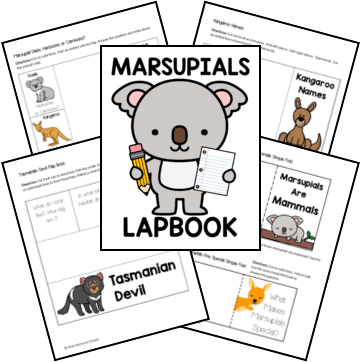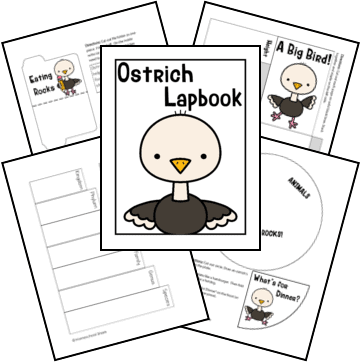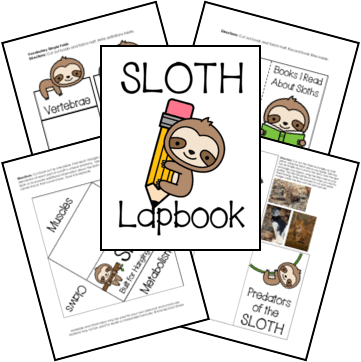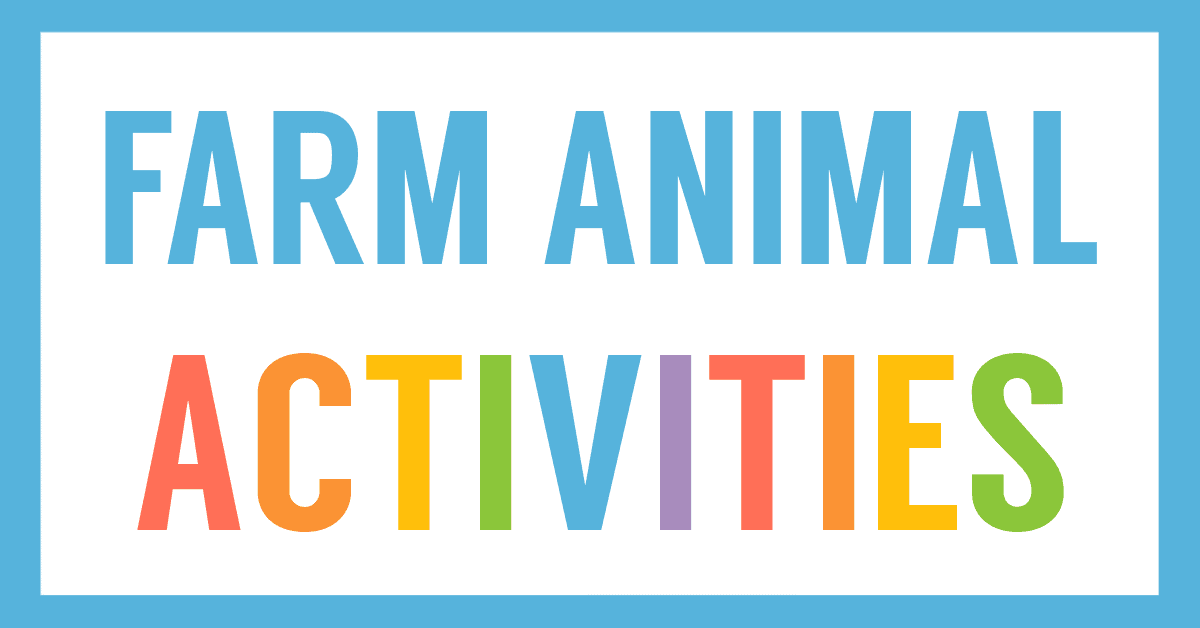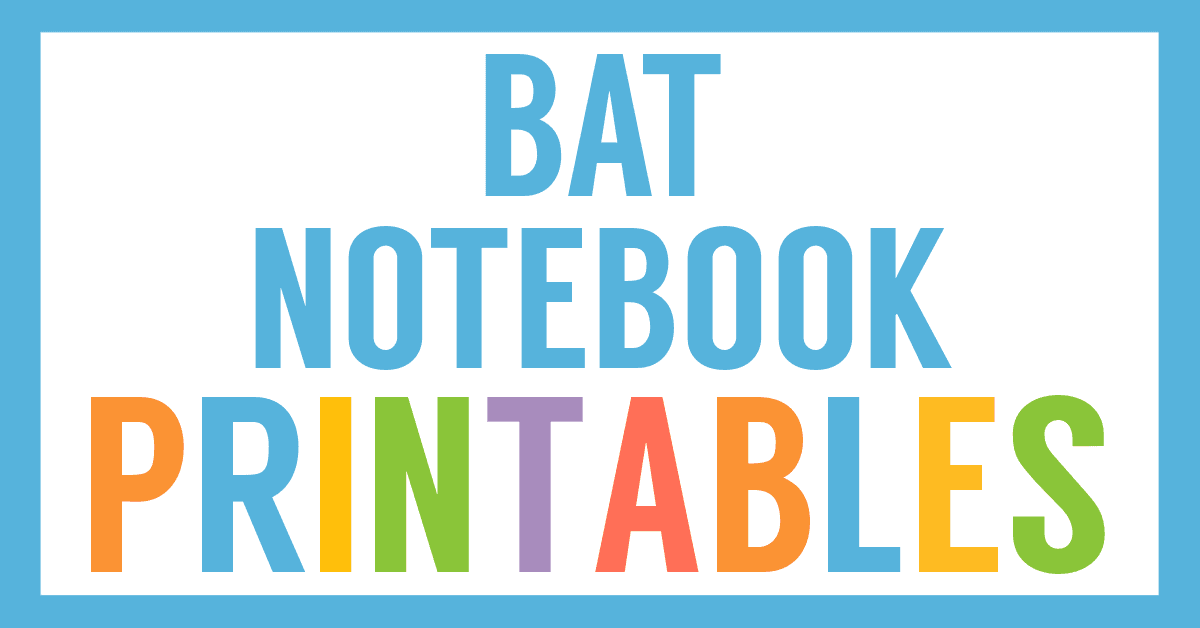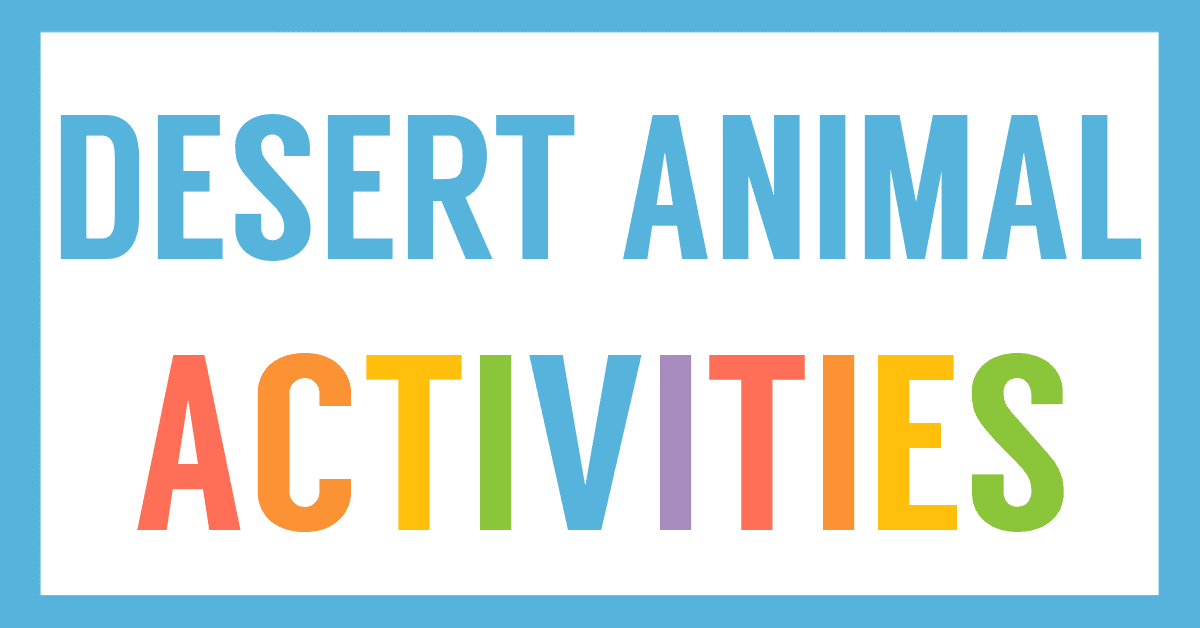Affiliate Disclaimer
We sometimes use affiliate links in our content. This won’t cost you anything, but it helps us to keep the site running. Thanks for your support.
What animals can you find in the polar regions? Tons! Grab our free Polar Animals Lapbook and learn about Arctic whales, Arctic foxes, penguins, puffins, snowy owls, polar bears, Arctic hares, and other animals living in the Arctic and Antarctic.
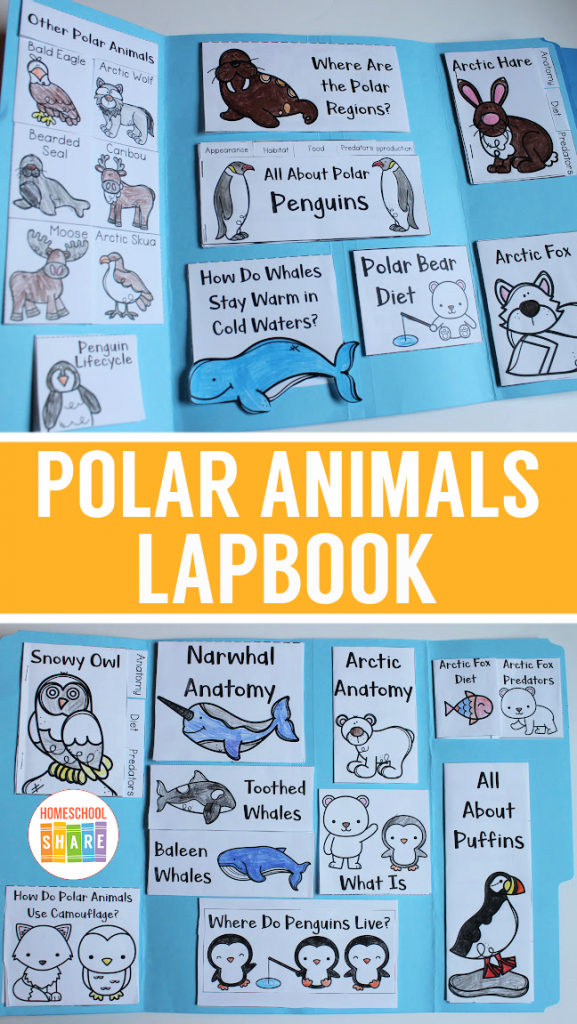
Polar Animals Lapbook Lessons
Here are some sample lessons from the Polar Animals Lapbook:
Polar Animals and Camouflage
Lots of polar animals have camouflage. Camouflage is when animals blend in with their surroundings so they are not seen by other animals or humans.
A polar bear’s white fur helps it camouflage against the ice and snow. This allows them to blend in and sneak up on their prey.
An arctic fox’s white coat also allows it hide as it hunts rodents, birds, and fish.
An arctic hare doesn’t need camouflage to help it hunt because it eats plants. Its camouflage helps it to hide from predators. During the winter, the hare is white and blends in with ice and snow. In spring, the hare’s coat turns reddish-brown. This allows it to camouflage with rocks and dirt. What other polar animals have camouflage?
Polar Animals and Migration
Migration is the seasonal movement of animals from one region to another. Many polar animals migrate.
Blue whales migrate to the equator to escape the harsh weather conditions in the poles. In the summer, they head back to the poles to feed on zooplankton. Your student may want to research other polar animals that migrate. Other types of whales, polar bears, emperor penguins, and other types of birds migrate as well.
Penguins
Penguins have black feathers on their backs that absorb the heat from the sun. They have white feathers on their fronts to blend with the ice—making it easier to hide from predators. This special type of coloring is called countershading.
All penguins live south of the equator, but not all penguins live in cold climates. Four species live in the Antarctic. It is covered in ice and very cold.
Penguins in the Antarctic eat fish, shrimp, and squid.
Animals that eat penguins include seals and whales. Penguins lay 1-2 eggs. They balance their eggs on their feet and use their stomachs to keep them warms until they hatch.
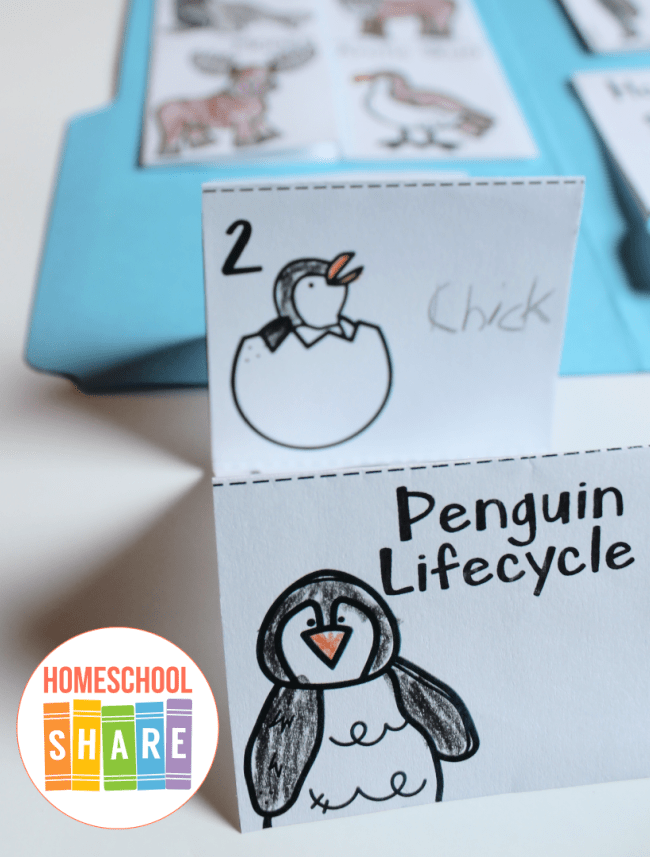
To access all of the lessons in this Polar Animals Lapbook, subscribe to Homeschool Share’s email list using the form in this post.
Polar Animals Lapbook Printables
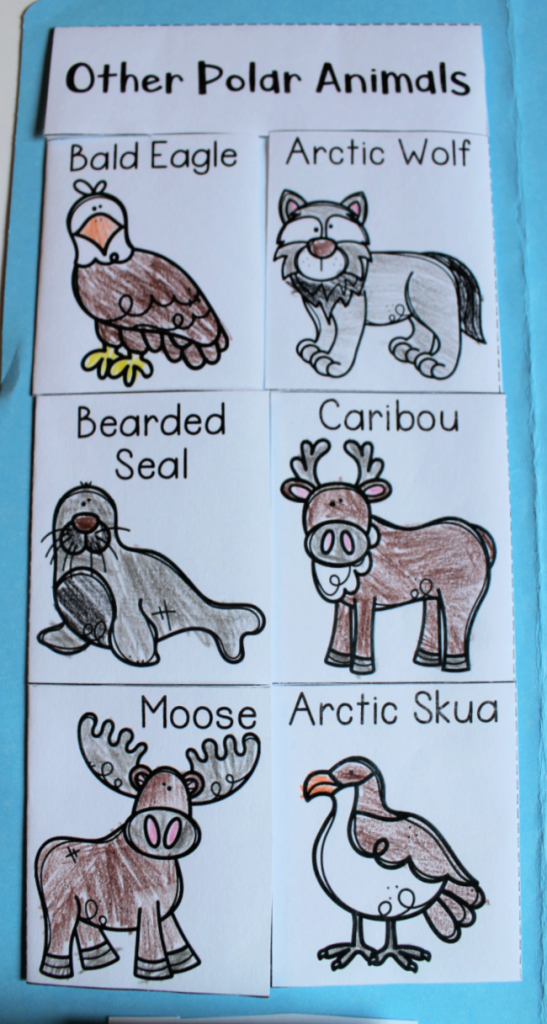
In addition to the research lessons, the file includes these mini-books for your student to create a Polar Animals Lapbook:
- How Do Polar Animals Use Camouflage? Simple Fold
- Baleen Whales vs. Toothed Whales
- How Do Whales Stay Warm in Cold Waters? Simple Fold
- Arctic Hare Tab Book
- Arctic Fox Predators and Diet Shutterfold
- Arctic Fox Word Find
- All About Polar Penguins Tab Book
- Penguin Life Cycle Accordion
- Migration Matchbook
- Where Do Penguins Live? Map
- Narwhal Anatomy Simple Fold Book
- All About Puffins Flap Book
- Snowy Owl Tab Book
- Polar Bear Anatomy Flap Book
- Polar Bear Diet Simple Fold Book
- Other Polar Animals Shutterflap Book (includes Bald Eagle, Bearded Seal, Arctic Wolf, Caribou, Moose, and Arctic Skya)
- Where Are the Polar Regions? Simple Fold Book
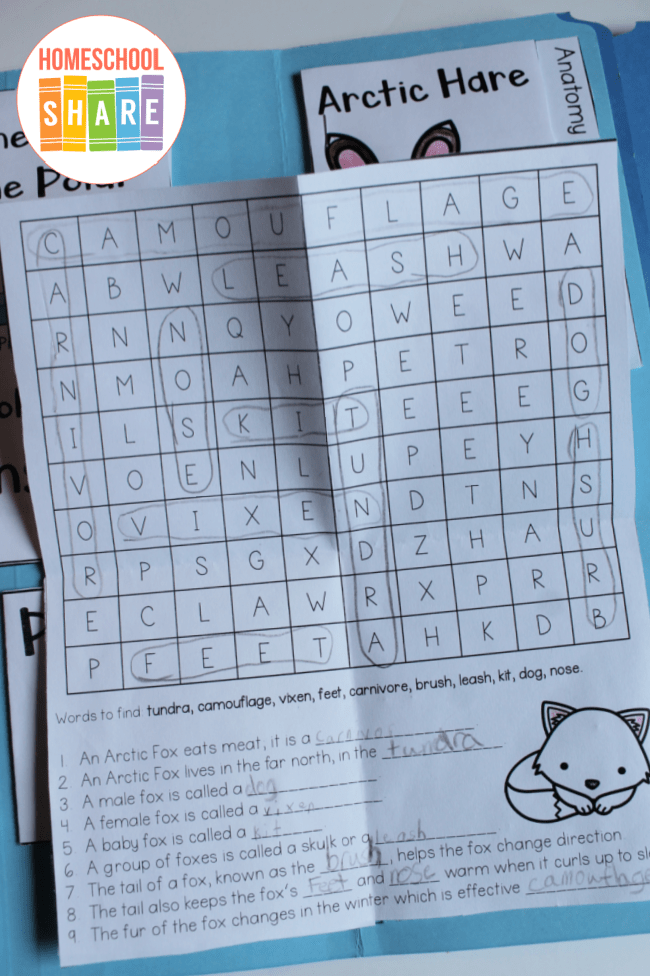
How to Get Started with Your Polar Animals Lapbook
Follow these simple instructions to get started with the Polar Animals Lapbook.
- If you want, go to your local library and check out books about polar animals (bald eagle, Arctic skua, caribou, Arctic wolf, seal, moose, walrus, polar bears, penguins, puffins, Arctic hare, Arctic whales, and others). Read the books throughout your study.
- Print the Polar Animals Lapbook.
- Choose and prepare the mini-books you want to use with your student.
- Enjoy a week of reading and learning all about polar animals!
Polar Animals Lapbook Sample
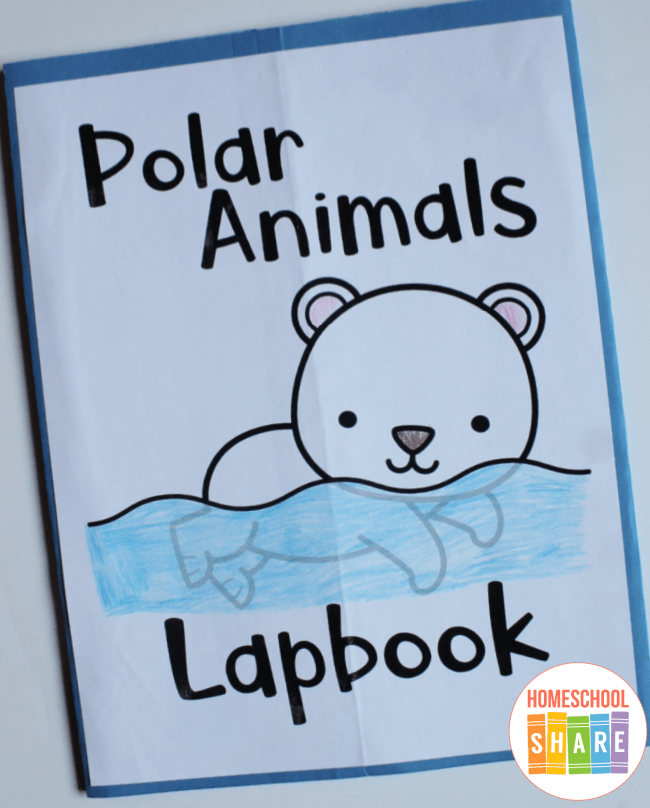
This lapbook was made with two file folders. You can pick and choose from the mini-books based on the individual needs of your student.
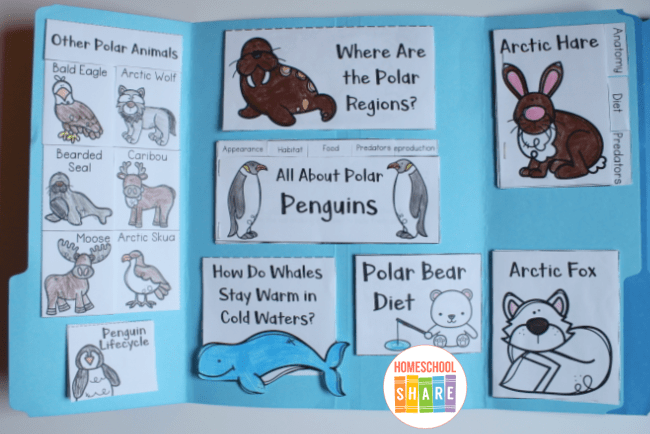
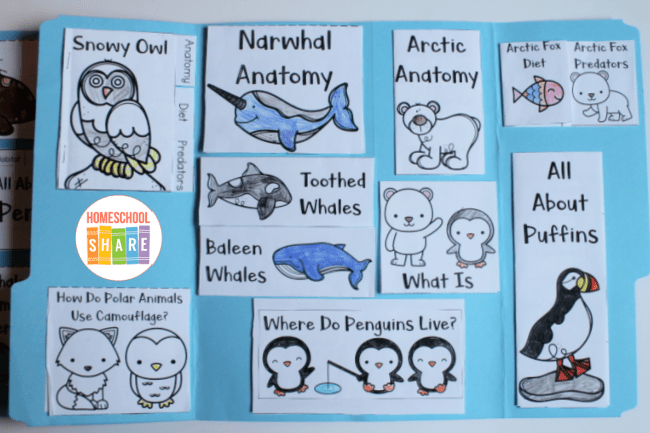
Download Your Free Polar Animals Lapbook
Use the form below to subscribe to the newsletter. Once you confirm, you’ll receive an email with the link to the lapbook. If you are already confirmed, simply enter your name and email address below, and you will receive an email with the link.
Explore Other Animal Lapbooks
After you finish the Polar Animals Lapbook, grab another animal lapbook study!

